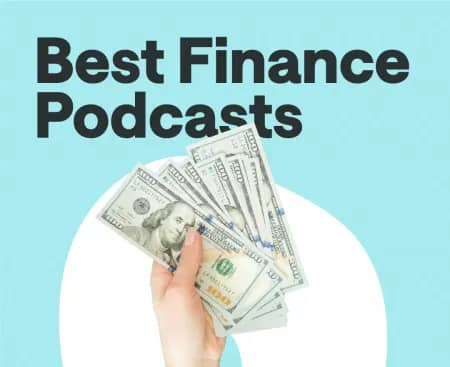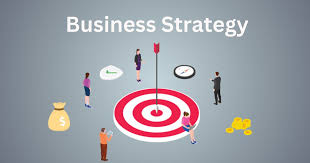Master Your Money Flow: Strategic Financial Planning Techniques
Having a strong financial plan is simply ‘telling your money where to go, rather than wondering where it went to’.
That’s if you keep to your financial plans.
What is Money Flow?
Let’s start with the basics. Think of money flow as the traffic of your finances. It’s how money comes into your life (income) and how it flows out (expenses).
In finance jargon:
– Inflow: Your income, bonuses, and any other money you receive.
– Outflow: Your expenses—rent, grocery bills, that overpriced coffee you told yourself was “self-care.”
As the famous financial expert Dave Ramsey once said, “A budget is telling your money where to go instead of wondering where it went.” So, let’s take the wheel!
Why is Financial Planning Important?
You might be wondering, “Why should I care?” Well, having a solid financial plan is like having a map on a road trip. Without one, you might end up in the wrong state—or worse, broke!
Benefits of Strategic Financial Planning:
– Goal Setting: It helps you set clear financial goals, like buying that dream house or being able to afford rent without selling a kidney.
– Better Decision Making: Knowing where your money goes helps you make informed choices about spending and saving.
– Stress Reduction: “What am I going to do about bills?” can be replaced with “I got this!”
In the words of Benjamin Franklin, “By failing to prepare, you are preparing to fail.” So, let’s not prepare for failure, shall we?
Understand Your Financial Situation
Before going into the deep end of planning, you need to know where you stand financially.
Steps to Assess Your Current Financial Situation:
1. Net Worth Calculation:
– List all your assets: home, car, savings accounts.
– List your liabilities: mortgage, loans, credit card balances.
– Net Worth = Assets – Liabilities. Voilà!
- Track Monthly Income and Expenses:
– Use apps or even that dusty Excel sheet you swore you’d get to.
– Categorize expenses: fixed (rent, utilities) and variable (fun stuff like Netflix and your daily caffeine fix).
- Evaluate Financial Goals:
– Short-term (vacation in 6 months), medium-term (new car in 3 years), long-term (retirement).
Statistics show that about 60% of Americans live paycheck to paycheck. Don’t become a statistic—take charge!
Create a Budget
If “budget” sounds boring, we’ll spice it up. It’s like a plan for your money party; you need to know how many guests (expenses) you can invite without going overboard.
Popular Budgeting Techniques:
- 50/30/20 Rule:
– 50% of income for needs (essentials)
– 30% for wants (the fun stuff)
– 20% for savings! (Because you’re responsible now)
- Zero-Based Budget:
– Every dollar has a job; income – expenses = $0 at the end of the month.
– This method is great for those who love a challenge.
- Envelope System:
– Withdraw cash for different categories and put them in envelopes.
– When the envelope is empty, it’s time to stop spending. You’ll look stylish at the next party too, with your trendy envelopes!
“Budgeting isn’t about restricting yourself—it’s about creating a life you love.” ~ Anonymous
Emergency Fund: Your Financial Safety Net
Imagine you’re living life carefree, and then BAM! Your car breaks down, or you have an unexpected medical expense. That’s where an emergency fund comes in—your little cushion against life’s surprises.
How to Build an Emergency Fund:
- Aim for 3-6 months of expenses. It sounds scary, but you’ll thank yourself later!
- Start small: $500 is a good initial goal. You can build from there.
- Automate savings: Set up a recurring transfer from checking to savings. Out of sight, out of mind!
95% of financial planners recommend having an emergency fund. Seriously, they can’t all be wrong!
Saving for Retirement: It’s Time to Talk About the “R” Word
You might think retirement is decades away—like your high school reunion—but the earlier you start saving, the more you’ll have when you kick back and sip cocktails on the beach!
Retirement Accounts Explained:
- 401(k):
– Employer-sponsored, often with matching contributions. Free money? Yes, please!
- IRA/Roth IRA:
– Individual retirement accounts.
– The Roth allows tax-free growth. This means you’ll likely pay taxes now, but not when you retire. It’s like a coffee deal where you buy now, but enjoy the caffeine later!
- Multiple Income Streams:
– Consider investing, starting a side hustle, or blogging about cats—whatever floats your boat.
“Retiring should be a joyful and liberating experience. But without savings, it can be a nightmare.” ~ Jim Gardner, Financial Guru
Debt Management: Taming the Beast
Debt can feel like an anchor keeping you from sailing smoothly toward financial freedom. Fear not! You can conquer it with the right strategies.
Techniques to Manage Your Debt:
- Snowball Method:
– Pay off the smallest debts first. The motivation of checking things off will keep you going!
- Avalanche Method
– Pay off debts with the highest interest rates first. Less interest overall, but maybe not as satisfying.
- Negotiation:
– Call your creditors. Ask for lower interest rates; you’ll be surprised how often it works.
According to the Federal Reserve, Americans owe over $1 trillion in credit card debt. Don’t be a part of that figure!
Investment: Making Your Money Work for You
You might be wondering, “Isn’t investment just for the rich?” Nope! Even average folks can invest in things like stocks, bonds, and mutual funds.
Basics of Investing:
- Stocks: Ownership in a company. Risky but potentially rewarding. Do you love the thrill of roller coasters? Then stocks might be your jam.
- Bonds: Loans to governments or corporations. Generally safer than stocks. Think of them as the comfy chairs of investing!
- Mutual Funds/ETFs: A collection of various investments lumped together. It’s like a buffet—lots of options served up on a single plate!
Start Small:
– Look for apps that allow you to invest spare change. Seriously, that $5 you didn’t know you had can grow into something significant over time!
“Investment in knowledge pays the best interest.” ~ Benjamin Franklin
Technology and Your Finances: The Modern Approach
In today’s digital age, technology can help streamline your financial planning like never before.
Finance Apps to Consider:
- Mint: A fantastic budgeting app. It aggregates all your accounts in one place. Less guesswork, more action!
- YNAB (You Need A Budget): This app helps with real-time tracking. It’s like having a financial coach in your pocket—minus the awkward small talk.
- Acorns: For investing spare change round-up. Think of it as saving without even trying.
Per surveys, 75% of people find budgeting apps beneficial. Don’t miss out on the tech wave!
Regular Reviews: The Key to Staying on Track
Just like you don’t want your favorite TV series to go on forever without some good editing, your finances need regular check-ins too!
How Often Should You Review Your Finances?
– Monthly: Track expenses and adjust your budget.
– Quarterly: Review cash flow, savings, and investment performance.
– Annually: Reassess your financial goals and adjust plans as necessary.
“Financial freedom is available to those who learn about it and work for it.” ~ Robert Kiyosaki
FAQs
Q1. Is it too late to start planning my finances?
A: It’s never too late! The best time to start was yesterday, but the second best time is now.
Q2. How can I improve my credit score?
A: Pay bills on time, reduce debt, and avoid opening many accounts at once.
Q3. Should I save or invest first?
A: Save an emergency fund before diving into investments; it gives you a safety net.
Q4. What if I can’t save 20% of my income?
A: Start with a smaller percentage and gradually increase as you can.
Q5. What’s the best way to handle unexpected expenses?
A: An emergency fund is your savior! If you don’t have one, consider short-term loans carefully.
You’ve taken the first step toward mastering your money flow. Financial planning doesn’t need to be overwhelming. With strategic techniques in place, you’ll not only survive but thrive.
Have in mind that, financial stability is not a destination; it’s a continuous journey. Your future self will thank you for the wise decisions you make today!
“Do not save what is left after spending, but spend what is left after saving.” – Warren Buffett.
Now go on, spread your financial wings, and let the money flow! 💸









https://tadalaccess.com/# does cialis raise blood pressure
canadian online pharmacy cialis generic cialis tadalafil 20 mg from india or buy a kilo of tadalafil powder
https://maps.google.co.ck/url?sa=t&url=https://tadalaccess.com cialis experience reddit
cialis para que sirve find tadalafil and prescription for cialis cialis high blood pressure
mail order cialis TadalAccess tadalafil brand name
overnight cialis delivery usa: cialis reviews photos – india pharmacy cialis
generic tadalafil 40 mg canadian pharmacy tadalafil 20mg or cialis 5mg price cvs
https://cse.google.am/url?sa=t&url=https://tadalaccess.com tadalafil medication
cialis manufacturer coupon lilly cialis copay card and cialis free trial voucher 2018 sildalis sildenafil tadalafil
cialis picture tadalafil generic in usa generic cialis
can i take two 5mg cialis at once: TadalAccess – what is cialis good for
buy cialis online australia pay with paypal tadalafil 5mg once a day or pictures of cialis pills
https://maps.google.co.za/url?sa=t&url=https://tadalaccess.com cialis advertisement
how long does it take for cialis to start working cialis prostate and tadalafil medication tadalafil tablets
buying generic cialis brand cialis cialis cost at cvs
https://tadalaccess.com/# cialis manufacturer coupon free trial
is tadalafil and cialis the same thing?: TadalAccess – cialis super active real online store
online cialis prescription cialis free trial voucher 2018 or shop for cialis
https://verify.authorize.net/anetseal/?pid=5a0e11fa-3743-4f5e-8789-a8edcbd83aef&rurl=http://tadalaccess.com combitic global caplet pvt ltd tadalafil
us cialis online pharmacy cialis 20 mg price walmart and what does cialis do cialis side effects
cialis cheapest prices TadalAccess tadalafil professional review
what is the difference between cialis and tadalafil: comprar tadalafil 40 mg en walmart sin receta houston texas – cialis tadalafil & dapoxetine
https://tadalaccess.com/# how long does cialis last in your system
cialis side effects with alcohol cialis efectos secundarios or cialis what age
https://www.google.cv/url?q=https://tadalaccess.com how long does it take for cialis to start working
cialis tadalafil 20 mg cialis manufacturer coupon and how to take cialis cialis free trial phone number
buying cialis internet cialis dapoxetine europe or cialis 20mg review
http://leadertoday.org/topframe2014.php?goto=http://tadalaccess.com tadalafil generic headache nausea
cialis coupon code how much does cialis cost at cvs and cialis black cialis otc switch
difference between sildenafil tadalafil and vardenafil cialis free trial vardenafil and tadalafil
can tadalafil cure erectile dysfunction: TadalAccess – cialis coupon free trial
https://tadalaccess.com/# cialis manufacturer coupon lilly
best place to buy generic cialis online cialis dosage 20mg or does cialis shrink the prostate
https://images.google.com.br/url?sa=t&url=https://tadalaccess.com cialis delivery held at customs
buying cialis online usa how long before sex should i take cialis and cialis goodrx cialis black review
cialis meme: order generic cialis online – cialis tadalafil 10 mg
cialis price walmart TadalAccess pregnancy category for tadalafil
https://tadalaccess.com/# canadian pharmacy online cialis
best research tadalafil 2017 order generic cialis online or what is cialis
https://www.k-to.ru/bitrix/rk.php?goto=http://tadalaccess.com cialis prescription cost
sildenafil vs tadalafil which is better cialis professional vs cialis super active and where can i buy cialis best price for tadalafil
buy cialis online canada cheap cialis free shipping or buy generic cialiss
https://marketplace.andalusiastarnews.com/AdHunter/Andalusia/Home/EmailFriend?url=https://tadalaccess.com purchase cialis on line
cialis efectos secundarios cialis dose and cialis 5mg side effects cialis 20 mg price costco
tadalafil (exilar-sava healthcare) version of cialis] (rx) lowest price cialis black in australia when will cialis be generic
poppers and cialis: TadalAccess – cialis free trial offer
cialis canada price tadalafil prescribing information or cialis manufacturer coupon 2018
https://millbrook-inf.northants.sch.uk/northants/primary/millbrook/CookiePolicy.action?backto=https://tadalaccess.com buy cialis without a prescription
canada cialis generic over the counter drug that works like cialis and cialis dosage for bph cialis tadalafil & dapoxetine
difference between sildenafil tadalafil and vardenafil TadalAccess is tadalafil as effective as cialis
https://tadalaccess.com/# us pharmacy prices for cialis
buy cialis 20 mg online: TadalAccess – cialis price walmart
Greate post. Keep writing such kind of information on your blog.
Im really impressed by your site.
Hi there, You have done an incredible job. I’ll definitely digg it
and in my opinion recommend to my friends. I am confident they will be benefited from this website.
Ero Pharm Fast: how to get ed meds online – ed meds cheap
Discount pharmacy Australia PharmAu24 Online medication store Australia
erectile dysfunction medicine online: Ero Pharm Fast – Ero Pharm Fast
https://biotpharm.com/# buy antibiotics from india
buy antibiotics over the counter: cheapest antibiotics – Over the counter antibiotics for infection
buy erectile dysfunction medication: Ero Pharm Fast – erection pills online
Medications online Australia: online pharmacy australia – Online medication store Australia
buy antibiotics from canada buy antibiotics online over the counter antibiotics
over the counter antibiotics: Biot Pharm – buy antibiotics over the counter
https://biotpharm.shop/# buy antibiotics
Online drugstore Australia: Medications online Australia – PharmAu24
over the counter antibiotics: Biot Pharm – antibiotic without presription
Ero Pharm Fast: Ero Pharm Fast – ed rx online
Online drugstore Australia online pharmacy australia Licensed online pharmacy AU
online erectile dysfunction ed treatments online or best online ed pills
http://whatsmywebsiteworth.info/value.php?site=eropharmfast.com cheapest online ed meds
buy ed meds online ed medicines online and cheapest online ed meds cheapest erectile dysfunction pills
buy antibiotics over the counter: buy antibiotics online – cheapest antibiotics
PharmAu24 Pharm Au24 or Online medication store Australia
https://cse.google.com.tj/url?q=https://pharmau24.shop pharmacy online australia
Pharm Au 24 PharmAu24 and Pharm Au24 Medications online Australia
get antibiotics without seeing a doctor: BiotPharm – buy antibiotics online
https://biotpharm.shop/# over the counter antibiotics
Discount pharmacy Australia: Medications online Australia – Licensed online pharmacy AU
buy antibiotics from canada buy antibiotics from canada or cheapest antibiotics
https://images.google.si/url?sa=t&url=https://biotpharm.com Over the counter antibiotics pills
over the counter antibiotics get antibiotics without seeing a doctor and buy antibiotics from india Over the counter antibiotics pills
buy antibiotics: buy antibiotics online uk – get antibiotics without seeing a doctor
Ero Pharm Fast Ero Pharm Fast Ero Pharm Fast
cheap ed п»їed pills online or cheapest ed online
https://maps.google.bt/url?q=https://eropharmfast.com cheap boner pills
what is the cheapest ed medication online erectile dysfunction medication and pills for ed online cheap ed treatment
cheapest ed meds: Ero Pharm Fast – Ero Pharm Fast
Ero Pharm Fast: order ed pills – Ero Pharm Fast
https://biotpharm.com/# Over the counter antibiotics for infection
Online medication store Australia Discount pharmacy Australia or Medications online Australia
http://images.google.ad/url?q=https://pharmau24.shop online pharmacy australia
Buy medicine online Australia Discount pharmacy Australia and Discount pharmacy Australia Pharm Au 24
Ero Pharm Fast: Ero Pharm Fast – Ero Pharm Fast
buy antibiotics from canada: BiotPharm – buy antibiotics from canada
online pharmacy australia Pharm Au24 Licensed online pharmacy AU
buy antibiotics from canada buy antibiotics online or buy antibiotics online
http://www.fsbswanville.com/redirect/notice.asp?site_name=Minnesota+Bankers+Association&site_url=http://biotpharm.com/ buy antibiotics for uti
buy antibiotics online buy antibiotics from india and buy antibiotics buy antibiotics for uti
п»їed pills online: ed prescriptions online – Ero Pharm Fast
Pharm Au 24: Online medication store Australia – Pharm Au 24
cheapest online ed treatment online ed treatments or low cost ed meds
http://web.fullsearch.com.ar/?url=http://eropharmfast.com/ ed online meds
what is the cheapest ed medication where can i buy ed pills and ed meds by mail cheap ed drugs
cheapest online ed meds buy erectile dysfunction pills online or cheap erection pills
http://www.redloft.de/url?q=https://eropharmfast.com online ed medications
buy erectile dysfunction treatment ed prescription online and ed medicines online cheap ed pills
buy antibiotics online Over the counter antibiotics pills or Over the counter antibiotics pills
https://images.google.cz/url?sa=t&url=http://biotpharm.com Over the counter antibiotics pills
over the counter antibiotics Over the counter antibiotics pills and buy antibiotics over the counter get antibiotics without seeing a doctor
kre7m8
xoh0l8
09kbpd